Trees Birds Mammals Fish Amphibians Reptiles
Wild Algarve
Bookshop
Fuscoporia ferrea (Pers) G. Cunn. - Cinnamon Porecrust
Phylum: Basidiomycota - Class: Agaricomycetes - Order: Polyporales - Family: Hymenochaetaceae
Distribution - Taxonomic History - Etymology - Identification - Culinary Notes - Reference Sources
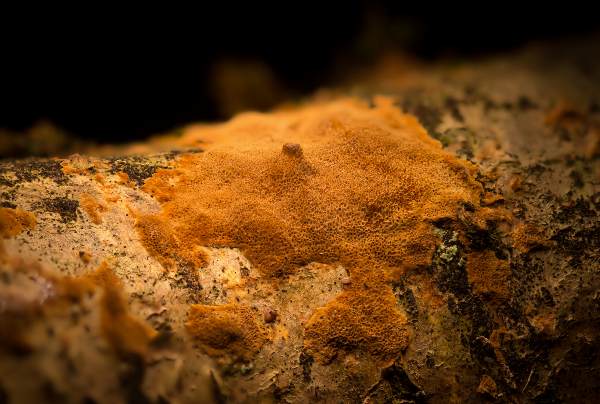
Crust fungi do not generally score highly in fungal beauty contests, and Fuscoporia ferrea is no exception; however, it must have impressed someone because it is one of the few crust fungi in the British Mycological Society's list of English names of fungi - perhaps more for its widespread appearance than its physical appearance.
I keep hoping to find a photogenic specimen, but when you have seen one of these polypore crust fungi you really have seen them all.
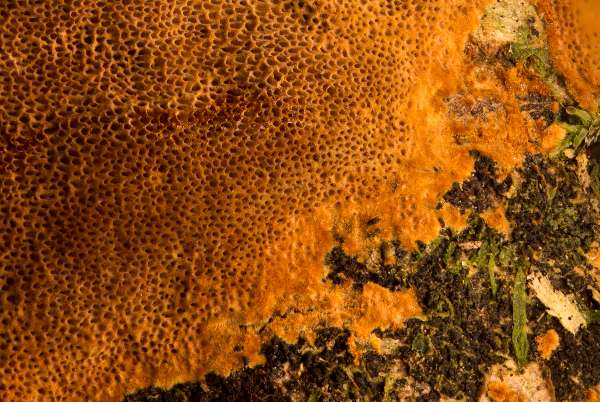
Distribution
Fuscoporia ferrea is fairly common in Britain and Ireland. It is also found in most parts of mainland Europe and northern Africa, particularly in Mediterranean countries. This species is also found in some parts of North America.
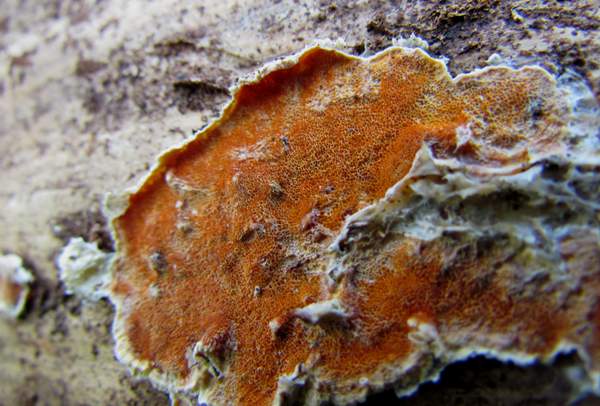
Taxonomic history
Christiaan Hendrik Persoon established the basionym of this species in 1825 when he described it under the scienific name Boletus torulosus.
The currently-accepted scientific name Fuscoporia ferrea dates from a 1948 publication by New Zealand mycologist Gordon Herriot Cunningham (1892 - 1962).
Synonyms of Fuscoporia ferrea include Polyporus ferreus Pers,, Phellinus ferreus (Pers,) Bourdot & Galzin, and Poria ferrea (Pers,) Bourdot & Galzin.
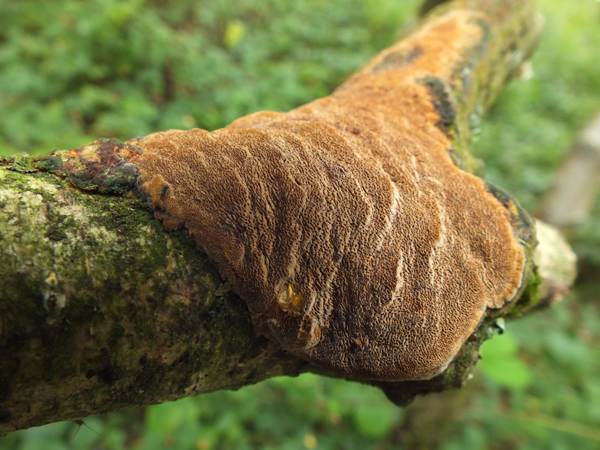
Etymology
Many field guides include this species under its synonymous scientific name Phellinus ferreus. In 1886 the genus Phellinus was circumscribed by French mycologist Lucien Quélet; that generic name comes from phell- meaning cork, while the suffix -inus denotes a superlative. The implication, therefore, is that fungi in the genus Phellinus are the most cork-like (the toughest?) of them all. The genus Fuscoporia was established in 2007 by American mycologist William Alphonso Murrill (1869 - 1957); the genus name comes from the Latin adjective fusca meaning dark brown, and is a reference to the dusky (dark brown) pored surface of this polypore. The specific epithet ferrea comes from the Latin ferrus and means like iron (hard or unbending), but maybe in this instance rust-coloured might have been intended!
Identification guide
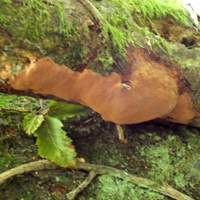 |
Fruitbody
Initially forming numerous small, cinnamon-yellow cushions which eventually fuse to form a larger crust-like fruitbody that turns cinnamon brown.
The flesh of this corticioid fungus is rusty brown. |
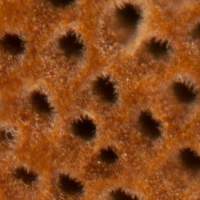 |
Tubes and Pores
The tubes are brown, 2 to 5mm deep in each of 4 to 5 layers; they terminate in small roundish red-brown pores spaced 4 to 6 per mm. |
| |
Spores
Ellipsoidal, smooth, thin-walled, 5-6.5 x 2-2.5 μm; inamyloid.
Spore print
White. |
Odour/taste |
Not significant. |
Habitat & Ecological role |
Saprobic on dead broadleaf wood, and most often on Hazel; causing white rot. |
Season |
Perennial, releasing spores throughout late summer, autumn and early winter. |
Culinary Notes
Fuscoporia ferrea is an extremely tough inedible fungus - even removing one of these crusts from a tree requires a sharp knife and would consume far more calories that would be obtained if you managed to chew and swallow it.
It seems unlikely that Cinnamon Porecrust contains deadly toxins, because according to Tom Volk closely related species were chewed as tobacco substitutes, but we know of no cooking recipes for this undistinguished crust fungus.
Reference Sources
Bourdot & Galzin (1925), Bulletin de la Société Mycologique de France 41: 191
Dictionary of the Fungi; Paul M. Kirk, Paul F. Cannon, David W. Minter and J. A. Stalpers; CABI, 2008
Wagner T, Fischer M. (2001). Natural groups and revised system for the European poroid Hymenochaetales (Basidiomycota) supported by nLSU rDNA sequence data. Mycological Research 105: 773–82.
Taxonomic history and synonym information on these pages is drawn from many sources but in particular from the British Mycological Society's GB Checklist of Fungi.
Top of page...
Fascinated by Fungi. Back by popular demand, Pat O'Reilly's best-selling 450-page hardback book is available now. The latest second edition was republished with a sparkling new cover design in September 2022 by Coch-y-Bonddu Books. Full details and copies are available from the publisher's online bookshop...